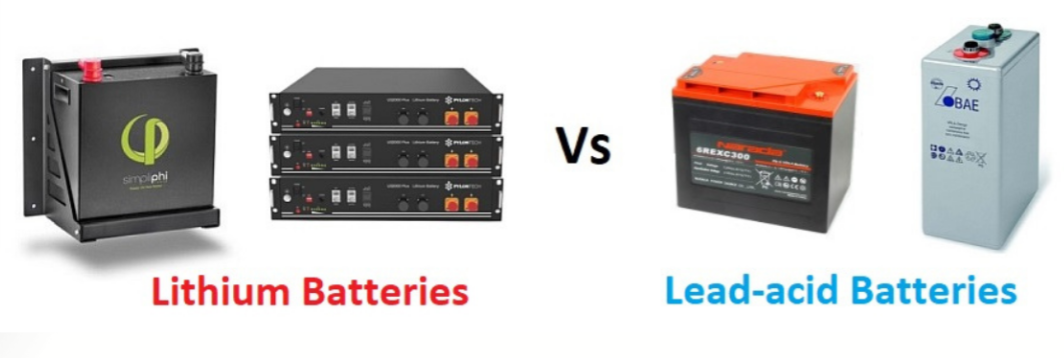Lithium Versus Acid Batteries
Lithium Ion Battery Dealer
Mobile Services | Fully Insured | Over 40 Years' Experience
Mobile Services
Fully Insured
Over 40 Years' Experience
Hours:
Golf Cart Batteries
Selecting the right battery for your electric cart is a big concern. Simply put, the performance of the cart is largely based on its battery. If your battery is inferior you can be left high and dry. It pays to do some research and choose a battery with care.
There are many things to consider when buying batteries for your cart. Your needs will determine the type of battery you want to purchase. For example, pay attention to the warranty, advertised lifespan, charging capacity, standby time, and maintenance.
The big disrupter in the battery industry is lithium batteries. More and more, we are seeing cart OEMs migrating from traditional lead-acid batteries to lithium batteries.
In this article, we will compare the lead-acid battery with lithium batteries for electric carts.
There are pros and cons with each battery type. And to be perfectly honest, there is really no wrong answer to which battery type you should choose. It really depends on your specific needs and personal preferences.
Let’s begin by going over some of the significant differences between lead-acid batteries and lithium batteries.
Differences Between Lead-Acid and Lithium Batteries
We will use the following parameters in comparing the two battery types:
- Price
- Weight
- Life cycle
- Reusability
- Efficiency
- Charging speed
- Maintenance
Price
Price seems to always be what people look at first when making a purchase. Lead-acid batteries are significantly cheaper than lithium batteries and it isn’t even close. You can expect to pay almost double for lithium.
That being said, that is based on the initial purchase price. There are maintenance costs you should factor in. If you consider the average cost per year, lithium batteries cost less to maintain, so the longer you have them, the less cost difference there will be over lead-acid.
Weight
Lithium batteries are much lighter than lead-acid batteries. As noted above, lithium-ion batteries cost twice as much but are about half the weight. Less weight means the cart can achieve higher speeds and run more efficiently. Lithium allows for more weight to be added to the cart before reaching capacity.
Life Cycle
The battery life is specified in terms of charge, discharge, and recharge cycle.
Lead-acid batteries have the capacity (the maximum amount of energy that can be extracted from the battery) of around 300 charge cycles with a depth of discharge of 50%. This means that, by the time the battery reaches 300 charge cycles, the battery’s capacity will reduce by as much as 50%.
Lithium batteries have a much higher life cycle. A standard lithium battery has between 2,000 to 5,000 charge cycles with a depth of 80%. Compare that to 500 to 1,000 charges for a lead-acid battery.
Again, the initial higher cost of lithium-ion doesn’t necessarily mean that you will save money buying lead-acid long term.
Reusability
Reusability or recycling of a battery is when a battery or its materials are repurposed to be used again.
Lead-acid batteries have the highest value of reusability. Almost 90% of the battery materials are recycled and reused. Recycling infrastructure for these batteries is well established.
The majority of the lead-acid batteries used in automobiles, golf carts, and home backup systems use a recycled lead from old batteries. On the other hand, lithium-ion batteries have very low reusability. The recycling infrastructure for lithium batteries is gradually growing however.
Efficiency
Efficiency, in this case, refers to how quickly a battery can be charged and how well a battery can perform when not fully charged. When comparing lithium-ion to lead-acid in efficiency, lithium-ion comes out way ahead. It generally takes 8 hours to fully charge lead-acid batteries, whereas it takes just 1 hour to charge 80% of lithium batteries and just 3 hours for a full charge.
But wait, there’s more. When you partially charge a lead-acid battery, it can sustain sulfation damage. But there are no negative effects of partially charging a lithium-ion battery. This makes it more convenient to quickly charge a lithium-ion battery before taking a ride.
Maintenance
We’ve covered maintenance briefly already. Lead-acid batteries need maintenance and lithium-ion don’t need maintenance.
Lead-acid requires that you constantly keep the top of the battery dry and clean. You must water the battery with distilled water to about ½ inch above the plates. You must not overcharge the batteries and you must use the battery often.
Lithium-ion batteries require none of those.
Call South Florida Golf Car Inc for more details.

Top-Quality Golf Cart Batteries
Call us for more information.
(954) 507-3701
Gene was able to come to our house and fix the issue immediately. He diagnosed and replaced what needed to be replaced within minutes. Highly recommended.
- Ted


Share On: